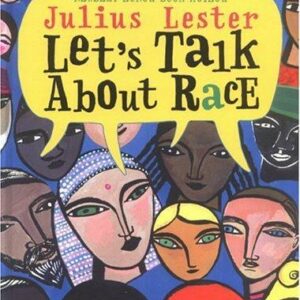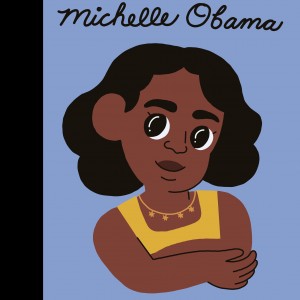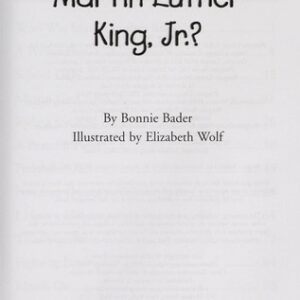Who Was Ida B. Wells?
$6.99
| Title | Range | Discount |
|---|---|---|
| Trade Discount | 5 + | 25% |
- Description
- Additional information
Description
The story of how a girl born into slavery became an early leader in the civil rights movement and the most famous Black female journalist in nineteenth-century America.
Born into slavery in 1862, Ida Bell Wells was freed as a result of the Emancipation Proclamation in 1865. Yet she could see how just how unjust the world was. This drove her to become a journalist and activist. Throughout her life, she fought against prejudice and for equality for African Americans. Ida B. Wells would go on to co-own a newspaper, write several books, help cofound the National Association for the Advancement of Colored People (NAACP), and fight for women’s right to vote.Sarah Fabiny has written several Who Was? titles, including biographies of Beatrix Potter, Frida Kahlo, Rachel Carson, and Gloria Steinem.Who Was Ida B. Wells?
Ida B. Wells was born to Elizabeth and James Wells on July 16, 1862. They both were enslaved on a farm in Holly Springs, Mississippi. Because her parents were slaves, that meant Ida was born enslaved, too. But on January 1, 1863, when Ida was less than six months old, President Abraham Lincoln signed the Emancipation Proclamation.
The Civil War between the North and the South was still raging. The proclamation granted freedom to all slaves who lived in Southern states fighting against the North. When the Civil War was finally over in 1865, slavery ended in all of the United States.
Now freed slaves were allowed to attend school. They could learn how to read and write. Before that, teaching enslaved people to read and write had been against the law.
Ida’s parents had never been to school. But they knew how important it was for their children to get an education. Ida later said, “Our job was to go to school and learn all we could.”
Ida loved school! She got good grades and read every book she could get her hands on. By the time she was six years old, she could read very well.
Ida’s father used to invite his friends over to the Wellses’ house. The men would talk about all kinds of things, including what it was like to have been enslaved. Ida’s father and his friends also discussed how they were still treated badly even though they were now free men. Ida saw that they were often fearful.
Ida’s father would often ask Ida to read the newspaper aloud to him and his friends. James was proud that his daughter was able to read so well. He also wanted Ida to see how powerful the written word could be. Ida didn’t always understand what the articles meant. Still, newspapers gave her knowledge about the world outside Holly Springs.
Even though she was still quite young, Ida realized that black people didn’t have the same rights as white people. It was very hard for black people to get a decent job. In the South, white people made it hard for them to vote. Ida saw that there was injustice in the world around her.
Could she do something to change that?
Chapter 1: Freedom
After the Civil War ended, James and Elizabeth Wells chose to stay on the farm where they had always lived. Now the man who owned the farm had to pay them for the work they did.
Ida’s parents were able to save money. After several years, they decided to rent their own house in Holly Springs. They wanted to build a new life for themselves and their growing family.
At school, Ida was smart and learned quickly. But she often had a hard time getting along with the other students. She had strong opinions and wasn’t afraid to say what was on her mind—-even to the teachers.
Reconstruction officially ended in 1877 while Rutherford B. Hayes was the president. Each state in the South once again took over running its own government. Many of them ignored the rights that the recently freed black people had gained.
In the summer of 1878, Ida went to visit her grandmother on her farm outside of Holly Springs. While Ida was away, a yellow fever epidemic hit the South. Yellow fever is a disease that is carried by mosquitoes. It is called yellow fever because in serious cases, a person’s skin turns a yellow color. The disease swept through parts of Mississippi, including Holly Springs. Many people left town, but Ida’s family stayed. Her father helped take care of the sick and made coffins for those who had died. Sadly, both Ida’s parents and her youngest brother died from the disease.
When Ida returned to Holly Springs, friends of her parents were talking about what should happen to the Wells children who had survived. Perhaps they should be split up and sent to live with other families. Ida was shocked by this. She told her parents’ friends that it would make her father and mother turn over in their graves to know their children had been scattered, and if they helped Ida find work, she would take care of her brothers and sisters.
At that time, there was a need for black teachers in rural areas out in the countryside. Two of the grown-ups taking care of the Wells children suggested that Ida take the test to become a teacher. If she passed it, then Ida could look after her brothers and sisters. So Ida studied hard, took the test, and passed.
One of her aunts helped lower the hems on Ida’s dresses and put up her hair to make her look older. Ida was only sixteen years old. But she made a promise to herself. For the rest of her life, she would never back away from a challenge.Who HQUS
Additional information
| Dimensions | 0.2100 × 5.2500 × 7.6300 in |
|---|---|
| Series | |
| Imprint | |
| ISBN-13 | |
| ISBN-10 | |
| Audience | |
| BISAC | |
| Subjects | feminist children's books, black history books for kids age 9 12, ida b wells book, ida b. wells, ida b wells, ida b wells biography, girl power books, biographies for kids ages 6-8, feminist kids books, civil rights books for kids, black history month books for kids, biographies for kids age 9 12, feminism, african american childrens books, african american children's books, black history books for kids, women's history month, women in history, JNF007110, civil rights, JNF018010, black history month, african american |







